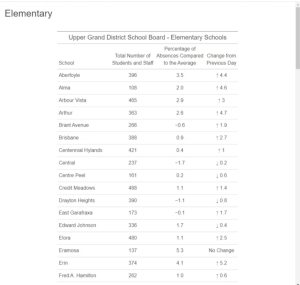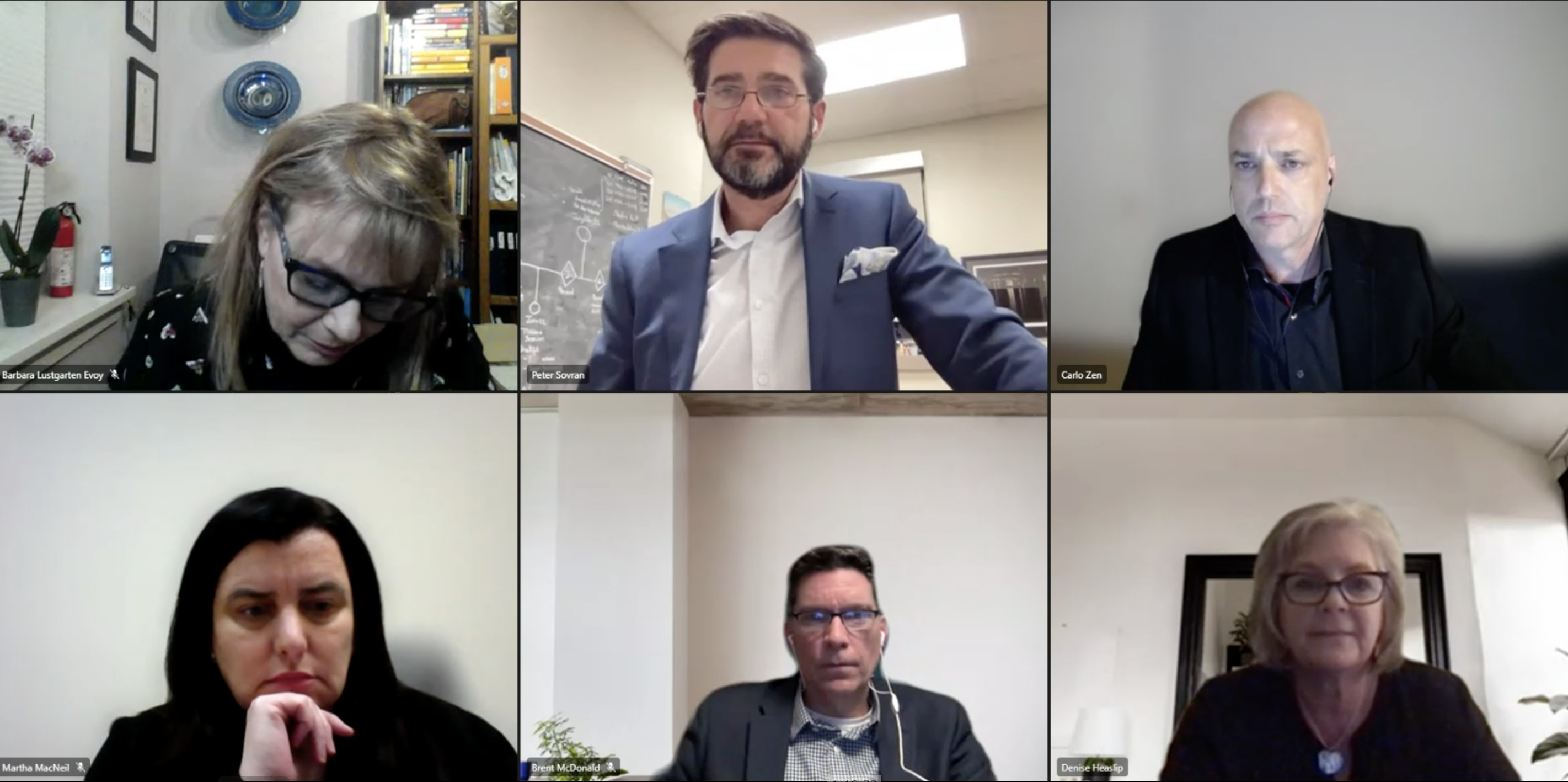WELLINGTON COUNTY – Officials and staff at the Upper Grand District School Board (UGDSB) and Wellington Catholic District School Board (WCDSB) are preparing for the Jan. 17 return to in-person learning with newly acquired HEPA units, higher-grade masks and a new method for case monitoring.
The official announcement to reopen schools on Jan. 17, as planned, came from the Ministry of Education on Jan. 12.
On Dec. 30, the province announced it would be putting in place additional health and safety measures “to create more layers of protection to keep schools as safe as possible for in-person learning.”
This included providing non-fit-tested N95 masks for staff in schools and licensed child care settings as an alternative to medical/surgical masks and an additional supply of high-quality three-ply cloth masks, as well as the deployment of an additional 3,000 standalone HEPA filter units to school boards.
In a Jan. 11 business operations committee meeting, members of the UGDSB’s executive committee presented an update on the reopening of schools, which included updates on enhancements to student and staff safety and supports.
“We have been fortunate to expedite project completion around ventilation as well as make numerous adjustments to our ventilation systems that were allowable because of the fact that students are currently not in the buildings,” director of education Peter Sovran announced in the meeting.
“The HEPA units … were purchased in anticipation of a return and we are very pleased to say that they are ready in our secondary schools and in our continuing learning spaces for the start of next week.”
In an email to the Advertiser, UGDSB spokesperson Heather Loney confirmed to date, the board has purchased 2,200 HEPA filter units in addition to the units supplied by the province.
“Prior to the return of in-person learning 100% of UGDSB classrooms will have a HEPA filter unit in place,” Loney stated.
She added following the province’s Jan. 3 announcement the board expects to receive an additional 48 units from the province.
WCDSB spokesperson Ali Wilson said in an emailed response the Catholic board has received additional HEPA filters which has allowed them to provide each of its school sites with an additional two filters.
“Currently all WCDSB sites operate mechanical air filtration, all school sites also were already equipped with HEPA filters for each classroom,” she explained.
“This is beyond requirements outlined by the ministry,” she added.
“The new HEPA filter units will be able to be used in common areas in the school which could include libraries or staff rooms.”
UGDSB executive director of education Brent McDonald confirmed in the Jan. 11 meeting the board has received shipments of non-fit N95 masks that will be made available and ready for staff to return on Jan. 17. Three-ply reusable masks will also be available for students.
“We have received the central shipments of these three-ply masks for our students from the province and are also very pleased to announce that we are also purchasing additional masks over and above this amount … to provide additional three-ply masks for students upon return next week,” McDonald remarked.
Loney confirmed the board has received just under 120,000 N95 masks, noting prior to winter break, the board “was allocated 2.4 surgical masks per day per staff member.
“Additionally, the board has received 96,000 three-layer cloth masks for students,” she noted.
“The use of these masks by students is encouraged but optional.”
Wilson also confirmed N95 and medical/surgical masks have been provided for all WCDSB staff members, but she noted the three-ply masks for students were to be received by the end of the week.
UGDSB updated mask policy
In a Jan. 7 post on the board’s website, the UGDSB announced it would be revising its previous mask exemption process in response to the increased transmissibility of the Omicron variant.
“As a result of the continued spread of COVID-19 and the increased transmissibility with this most recent variant, at the Upper Grand District School Board we have reviewed and updated our mask exemption process,” McDonald addressed in the Jan. 11 meeting.
“As we know masking is only one of several key protective strategies for staff and students, however in the case of this most recent variant, we are continually reminded of how important this particular strategy of masking is to ensure the health of our students and staff.”
The previous exemption process only required parental attestation that their child had a medical reason for an exemption.
McDonald noted over 200 families currently have a mask exemption under the previous policy.
Moving forward, a mask exemption certificate signed and stamped by a certified physician (of medicine) or nurse practitioner will be required in order to approve an exemption request.
Any previous approval of an exemption will no longer be valid when students return to in-person learning.
“All other requests for a mask exemption that fall outside of a medical exemption or those requirements would need to be vetted by the principal of the school, the superintendent and then finally approved by myself as the executive superintendent of education,” said McDonald.
“As always, for students that have difficulty wearing a mask, administrators will continue to work with families to problem solve and look for opportunities for safe mask breaks for students.”
School boards prepare case count monitoring
With schools across the province now tasked with monitoring absenteeism in classrooms, the UGDSB has created a “case count proxy pilot” to monitor absences in schools across the board.
The board’s superintendent of operations Carlo Zen said moving forward the board will be using daily attendance as a proxy for case counts.
The program will be based on the average absence rate, meaning it will be calculated for each school “based on the absence data from [September to December, 2021],” Zen said.
“We’re going to use this data as a baseline to compare the absences so as not to overstate potential COVID-related absences.”

A sample draft shown in the board’s Jan. 11 business operations meeting of the UGDSB’s “case count proxy pilot” which will be made available on the board’s website once students return to in-person learning next week. (Screenshot from meeting)
For example, Zen explained, if “School A” had an average daily absence rate of 10 per cent from September to December, on the first day of return to in-person learning the school has an absence rate of 15%, the number that would then be reported would be 5%.
As per the updated guidelines from the province, schools will be required to report absenteeism to local public health units.
If levels reach 30%, public health and education officials are expected to communicate with families about reasons why levels have increased.
“It is an approximation, it is a pilot,” Sovran reminded the board. “We don’t know whether or not this will meet the intended need.
“We also don’t know whether or not the Ministry of Education will be providing any additional guidance around an attendance proxy such as this,” he added. “We didn’t want to wait.”
Loney confirmed the pilot program will begin next week when in-person learning resumes.
Wilson said the WCDSB will also continue tracking daily staff and student absence data and will be reporting information to the provincial government and public health.
The information will be available publicly beginning the week of Jan. 24.




